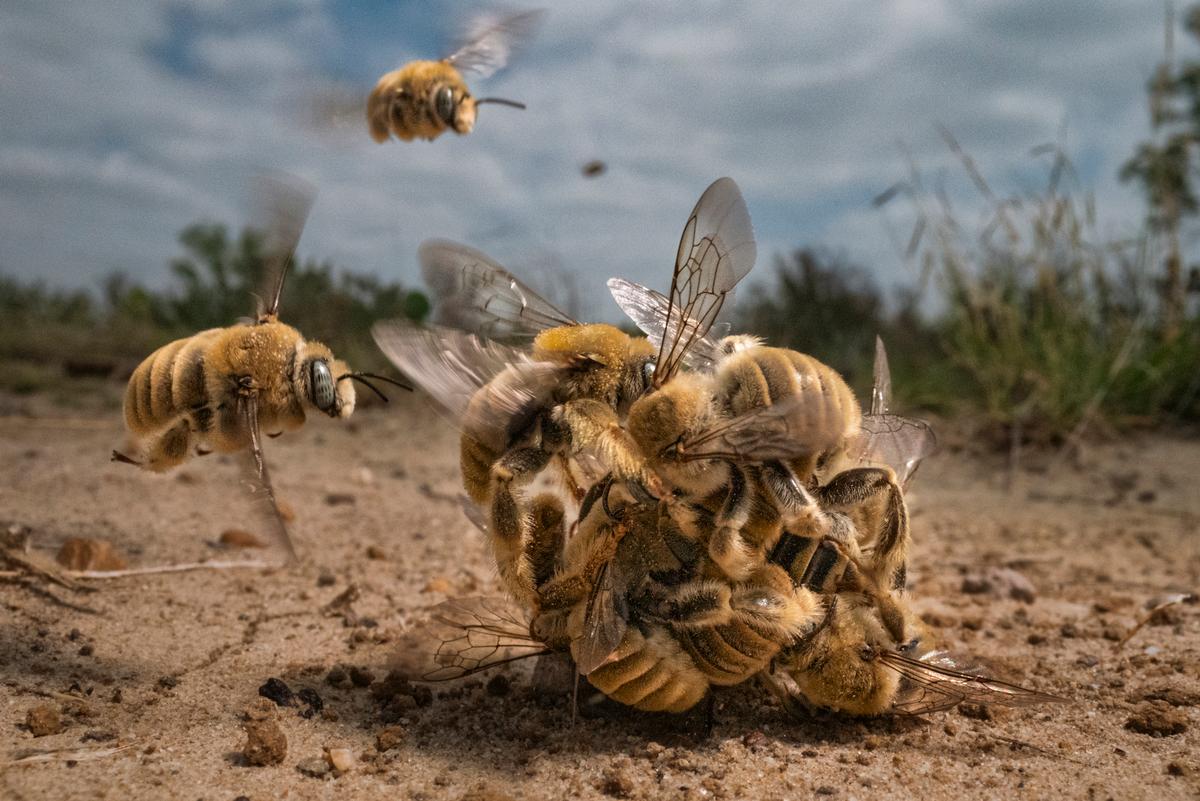Each year, the California Academy of Sciences’ renowned BigPicture Photography Competition celebrates some of the world’s best photographers and the year’s most striking images. Judged by an esteemed panel of nature and conservation photography experts, including Suzi Eszterhas, Sophie Stafford, and bioGraphic contributing photo editor Jaymi Heimbuch, the competition’s winning images and finalists highlight Earth’s biodiversity. Each photo, in its own way, inspires viewers to protect and conserve the remarkable diversity of life on Earth. Below, we present the winners and some of our personal favorites from this year’s competition.
Grand Prize Winner

"Bee Balling." Courtesy of Karine Aigner






